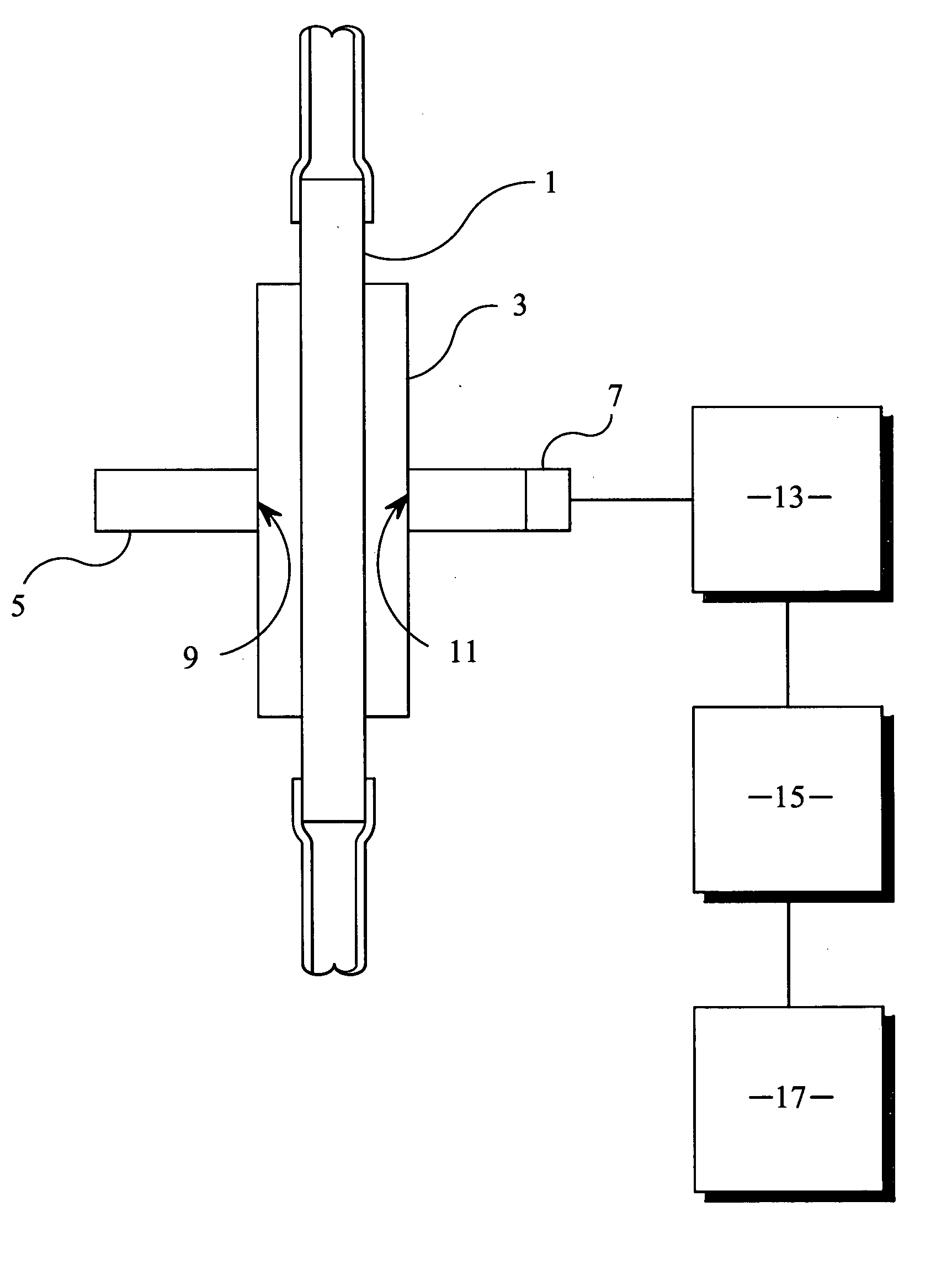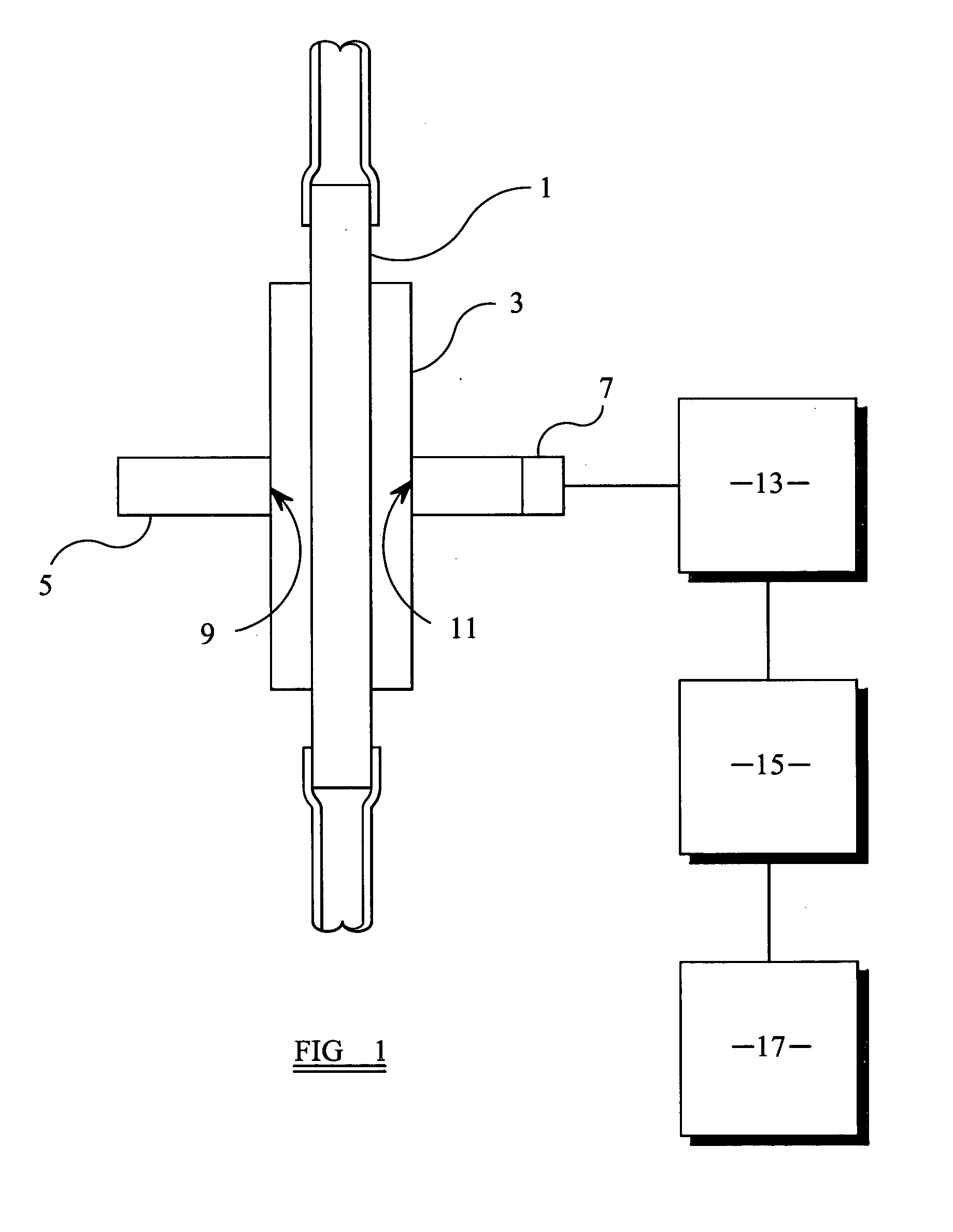Particle counter for liquids
- Summary
- Abstract
- Description
- Claims
- Application Information
AI Technical Summary
Benefits of technology
Problems solved by technology
Method used
Image
Examples
Embodiment Construction
[0016] The liquid particle counter is shown in FIG. 1 in diagrammatic form and comprises a sample cell 1 which is made of conventional glass capillary tubing of substantially circular cross-section. In liquid counters it is standard practice to use a rectangular sample cell which is much more costly than glass tubing. It has generally been assumed that the sample cell must have planar faces which are perpendicular to the axis of a beam of light which, in use, passes through the sample cell. Surprisingly, we have found that when a small aperture is used the cylindrical surface of the sample cell appears to be substantially flat and perpendicular to the axis of the beam of light. The use of a cylindrical sample cell also offers the advantage over rectangular sample cells that push fit connections can be made thereby eliminating the need for costly connectors which are associated with connecting a rectangular sample cell to conventional cylindrical tubing. The glass tubing may have an ...
PUM
 Login to View More
Login to View More Abstract
Description
Claims
Application Information
 Login to View More
Login to View More - R&D
- Intellectual Property
- Life Sciences
- Materials
- Tech Scout
- Unparalleled Data Quality
- Higher Quality Content
- 60% Fewer Hallucinations
Browse by: Latest US Patents, China's latest patents, Technical Efficacy Thesaurus, Application Domain, Technology Topic, Popular Technical Reports.
© 2025 PatSnap. All rights reserved.Legal|Privacy policy|Modern Slavery Act Transparency Statement|Sitemap|About US| Contact US: help@patsnap.com


